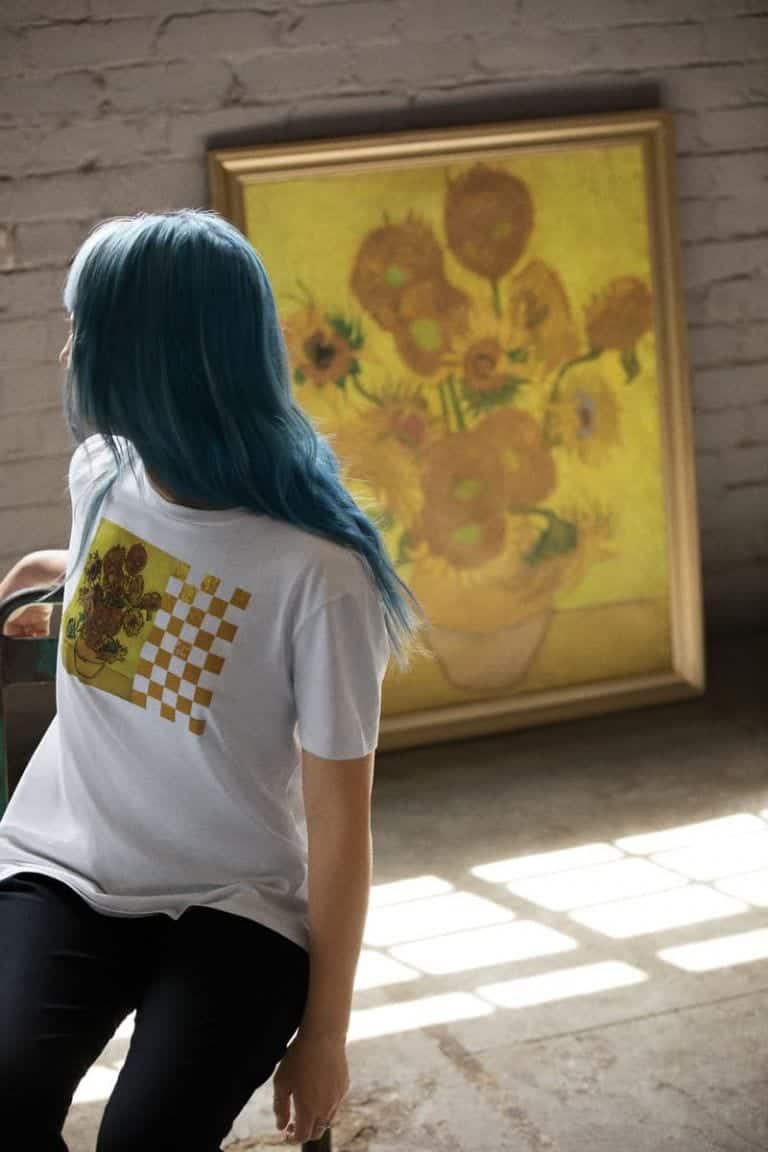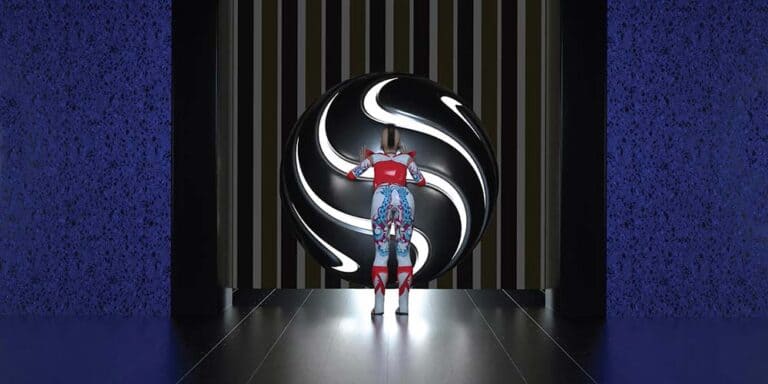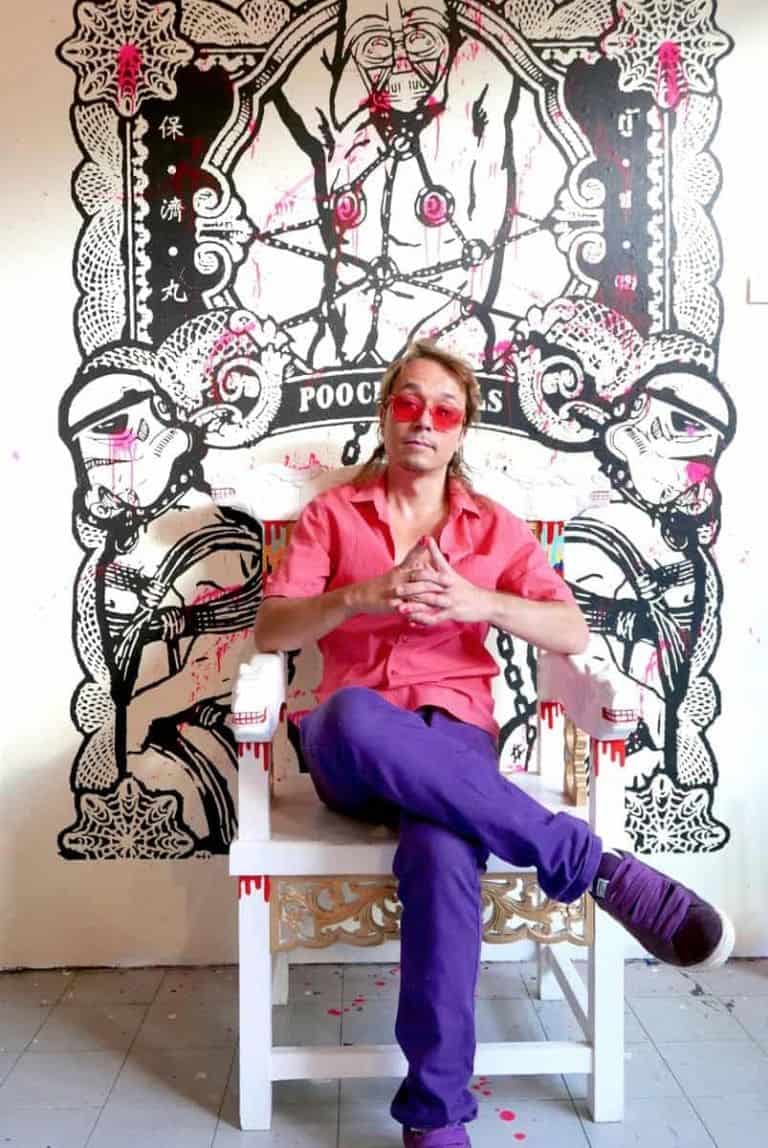With live performances back in full force , is it finally time to say goodbye to binge-rewatching old concerts and couch-scrolling through online art exhibitions?
This year’s Singapore International Festival of Arts (SIFA) has been a flash-bang of edgy experiments and artistic crossovers. The decommissioned Pasir Panjang Power Station was revived for three shows, while “alternative”, multidisciplinary performances were staged at Goodman Arts Centre and Aliwal Arts Centre.
Amid the hype of getting out again to mingle with fellow arts-loving folk, you might have missed one of SIFA’s intriguing new forays into virtuality — Life Profusion.
Billed as a “virtual stage that runs parallel to the live festival”, Life Profusion responds to the realities of a digital, post-pandemic era. In the face of Covid regulations over the past two years, recorded performances have been streamed online through SIFA On Demand.
Life Profusion, however, is an exclusively virtual “venue” that consists of five unique content categories: +DREAM, +EAT, +READ, +GROW, and +DISCUSS. It’s a bold attempt to dissect the bare bones of performance, or as, SIFA’s theme for the next three-year festival arc has it, The Anatomy of Performance.
The “three ultracool capsules of digital ‘snacks’” commissioned specially for +EAT caught our attention here at Plural. Curated by local music label and artist collective Syndicate, this lineup of experimental shorts, game-like sonic installation spaces, and Instagram posts defies the usual divisions between song, music, movement, illustration, poetry and art. +EAT raises important questions about how digital consumption has and will continue to shape art-making.
Can something be considered a “performance”, or even a ritual, without the element of live, physical interaction between artist and audience? How might the energies “radiating from the festival” overflow into this immaterial space of encounter between artist and audience? Or, conversely, might the artistry of the stage lose its value when whittled down to “content” for a six-inch screen?
To find out more, I spoke with Cherry Chan from Syndicate, and artists Anise, Brandon Tay, and Cybercesspool, who shared what it was like creating and curating art for a digital space.
Curating for a digital space
“Actually, SIFA came to us with the idea of Life Profusion,” Cherry recounted. Syndicate was curious as to how the artists would approach gestures, clothing and artefacts, given that the performance would be mediated through a screen during the pandemic.
+EAT is entirely free-to-view, and will be available in perpetuity. There was discussion over paywalling the content, but Cherry “wanted a space which was not covered by the other programmes.”
To amplify “the artist’s voice,” Syndicate focused on “small drops”. Thus the three seasonal capsules, Music, Movement, and Digital Beings, were progressively released, like singles on an LP.
“We don’t come from a traditional curating background,” Cherry said, referring to Syndicate’s beginnings as a loose collective of artists and friends. While the excitement lay in not knowing what to expect, Cherry added that Syndicate’s role was to “support [each artist’s] vision.”
Although certain themes recur across the pieces — cyborg bodies, dreamy dystopian landscapes — it’s clear that each has its own unique visual timbre.
What’s in the capsules?
In the first capsule, there’s Re: Re: Re: Re: Re: Re: Ritual by visual artist Cybercesspool and musicians deførmed and Claude Glass. The twenty-minute video ricochets between manic electronica and melancholy acoustic melodies, unfurling a lurid, psychedelic swirl of computer game graphics; nondescript, liminal spaces, and abstract patterns. With lyrics like, “Once upon a timeless loop, where the slip road out’s a knotless noose,” the work blends whimsy, dark humour and existential ennui.
Re:Re: Re: Re: Re: Re: Ritual grew out of the artists’ shared experiences of rituals that they couldn’t understand growing up. Constant repetition made these rituals increasingly meaningless to them.


But, as Cybercesspool maintained throughout our interview, “It’s not that deep.” Rather than trying to tease out a coherent narrative (there isn’t one — that’s the point), this trippy, meme-y music video asks us to revel in its playful absurdity.
Alongside this piece is non-breaking space, a “hybrid digital art exhibition and EP release” by Anise (aka Suhui Hee) and Brandon Tay. Created in collaboration with electronic producer Mervin Wong, performance-maker Sonia Kwek and writer Amanda Lee Koe, non-breaking space is an expansive journey through five cavernous, alien landscapes that resemble the human body’s insides. As the viewer navigates the 3D spaces with a computer keyboard and mouse, organic, flesh-like forms morph and mutate to Anise’s soaring vocals.
“These five tracks are my road map and journey back to becoming more comfortable and at ease with my body and the environment,” Anise reflected, describing them as “different methodologies of finding our way back to nature.

”non-breaking space dives deep into the “linkages […] between all the collaborators, between us and nature.” Instead of reinforcing our cultural tendency to separate nature and human civilization, the artists were more interested in creating a continuum between living beings and their ecological habitats.

The second capsule, Movement features works that deal obliquely with the environment. Styled after a children’s programme, Lenne Chai’s Dry Spell delves into chilli bawang, the ritual practice of skewering onions and chillies to the ground to ward off the rain. There’s also Anki, a music video by Kiat and Looop (David Wexler of Strangeloop Studios), which threads through a sun-scorched, post-apocalyptic landscape, tracing a future-human’s journey to see the last sunset.

The third capsule, Digital Beings, delves further into transhuman imagery. There’s Yuele’s dystopian short film 电子脉络 — ETHER, Shielhiel’s synth-filled music video Farewell, Angel, and Phua Juan Yong and Weish’s The Paiseh Piece: A poem, a “bite-sized snack” with illustrations, poems and animations on Instagram.
What I’ve sketched so far is only a taster of these delectable digital snacks. If you’re looking for something a little different from the usual museum or theatre fare, you’ve come to the right place.
+EAT features artists who don’t fit easily into the roster of commercial galleries — those whose practices span creative disciplines, defying generic or medium-specific labels — as well as artists like Cybercesspool, who might still feel that they are “emerging.”
Collaborations and friendships
But how did this particular selection of distinct, yet somehow complementary “snack” flavours come about?
“We’re always listening to what’s out there, and there are people on the list that I’ve always wanted to work with,” Cherry explained. Some of the artists reached out to peers who they had always wanted to work with, while Cherry match-made others.
“Collaboration and the very open way of working have always been quite a Syndicate thing,” said Cherry, emphasising the importance of a supportive community that can “feed off each other’s artistry.”
In the anatomy of performance, collaboration – be it in the exchange of ideas and techniques between artists, or in the unspoken rapport between audiences and performers – is a vital organ. +EAT was a chance to consider how these dialogues might be re-scripted for a virtual stage.
“SIFA is traditionally a very theatre-driven festival where […] performers would interact with the audience and change their performance as it goes. That’s what we also wanted to do, not with the audience, but with each other,” Cybercesspool shared.
Similarly, the making of non-breaking space was a ritual in itself. “The tension between our ideas about nature and ourselves, between collaborators, between people — I think that was the […] liminal, ritualistic aspect of it,” said Brandon.
Art or content?
Seeing the faces behind the works and learning about their collaborative processes made +EAT a lot more human for me. It’s easy to view the digital realm as an alienating space for anonymous, disembodied consciousnesses, and not real people.
But what non-breaking space and Re: Ritual reveal is that virtuality isn’t a threat to the intensely personal, symbiotic face-to-face relationships between artists and audiences. Rather, the challenge in this age of NFTs and A.I. art is to develop modes of exchange that can be just as generative as “traditional” live performances.
Thinking about interactions that virtual spaces engender also raises nagging questions. If we’re viewing a work of “art” on a tab that’s just one among social media pages and random websites, what makes it different from the “content” that we’re fed by the all-pervasive algorithms that structure our time online?
“Art is special because it provides an event,” said Brandon. “But content, the way we consume it, it’s all one-way, undifferentiated. So let’s say you play a Youtube or Tiktok— it’s just flow, it’s smoothness. And you have limited control over it. When you engage with art, you’re choosing to participate in it.”
To bracket a space and time for the “event” of art, Anise and Brandon designed non-breaking space as a desktop-only interactive experience, such that the viewer would likely be seated comfortably indoors, and not be multitasking on the go with a mobile phone.
Walking in and out of a museum or theatre bookends the time spent with the art and the artist as special — it demands that we devote attention and receptivity to what the art has to say, within that particular space and time. Creating the same intensity of aesthetic and emotional engagement proves another challenge for virtual spaces.
As clichéd as it sounds, where challenges arise, so do opportunities — for artistic innovation, for reaching out to new audiences, and for engaging with existing art-lovers in novel ways. +EAT represents a welcome step forward in dealing with the shifting realities of performance- and art-making in this age of bits and bytes.
____________________________________
Check out SIFA Life Profusion for yourself here. The +EAT videos will be available online till 10 July 2022.












